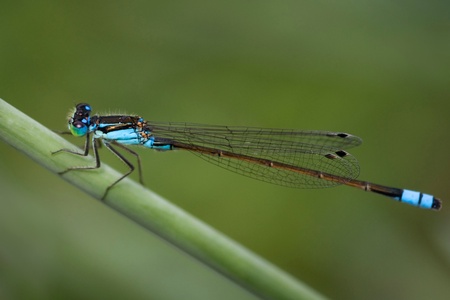Damselflies are more likely to be able to withstand the cold Scottish climate if they are part of the 'right social group', according to scientists from the University of Aberdeen.
Researchers studied a particular species of damselfly, which uses its colour to communicate and signal their social and reproductive strategies to other members of their species. The team looked at how groups tolerated the cold by examining the colour forms they took, as well as the social environments and climates that contributed to cold acclimation in the different colour morphs.
Dr Lesley Lancaster, from the University of Aberdeen, led the research after noticing that in colder sites there was a high frequency of one particular colour form, and wanted to delve further to find out if social interactions between the species induced physiological changes that enabled the damselfly to cope with the cold.
Dr Lancaster said: “We found that cold acclimation ability was indeed shaped by both climatic conditions and social interactions. Being around many individuals of the same colour (i.e., the same social strategy) as oneself was stressful to the damselflies. Although it is not usually beneficial to be in a stressful social environment, for damselflies in cold climates, it turns out that being stressed out by your peers is actually a positive, because the protective, physiological stress response induced by these social interactions also protects individuals against future stressors, including cold weather events. For this reason, we found high frequencies of all the same social type in cold, harsh, recently colonized sites. This was because this particular social dynamic conferred an ability to survive the cold temperatures there.
“This research shows that social dynamics can have powerful effects on the ability of species to withstand novel climates. Basically, if you have the right social partners, you can tolerate more harsh conditions than with the wrong social partners!”
The work was carried out studying damselflies from across Aberdeenshire and published in the Biological Journal of the Linnean Society.


